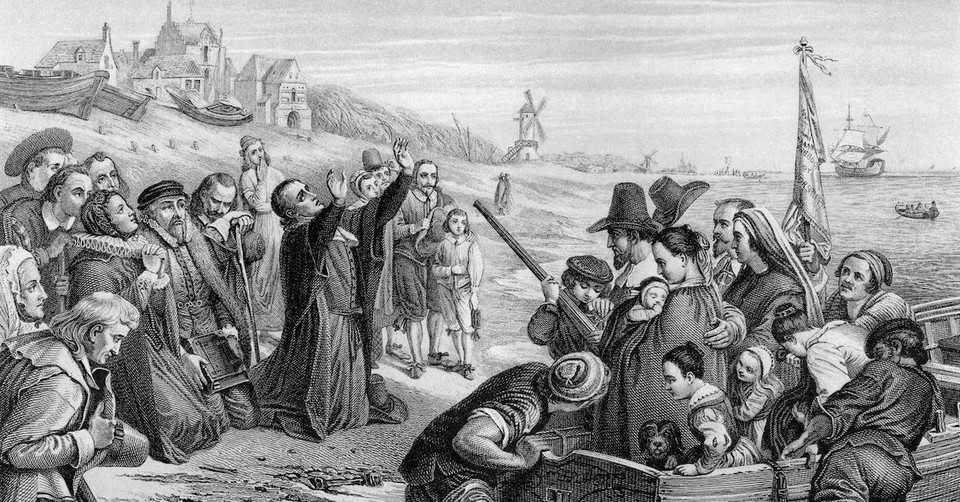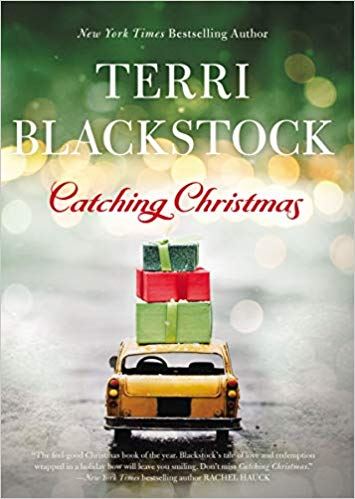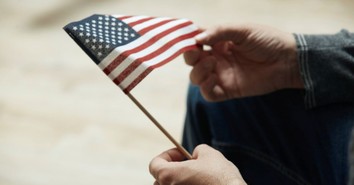10 Interesting Thanksgiving Facts to Share around the Table

Thinking about the roots of Thanksgiving reminds me of my own family’s roots. Years ago, I decided to research my genealogy. I started with a grandfather I had never known since I knew so little about his family. I learned that he had grown up on a reservation in Oklahoma because his mother was 100% Chickasaw Indian. Because that fascinated me, I decided to follow his ancestry back for generations, to see when the rest of his family had arrived in America. To my shock, I found that he had ancestors who’d come over on the Mayflower. Edward Fuller and his wife, and their twelve-year-old son Samuel Fuller (as well as Edward’s brother, also named Samuel), were among the pilgrims who made that treacherous journey.
Because of that, I developed an interest in the Mayflower and began reading about these early settlers at Plymouth Rock. Here are some of the facts that interested me most.
10 Interesting Facts about the History of Thanksgiving
1. The pilgrims had invested every penny they had to finance their trip. They were originally going to take two ships over, but when one of the boats had problems and couldn’t be used, there was no plan B. They had to combine two shiploads of people into one (and the Mayflower itself had a lot of problems), but they continued onward.
2. Because of the delays, due to the boats, they started their journey weeks later than they originally intended. They were at sea for 66 days and arrived in the New England area on November 11, 1620. That made it more difficult, since they didn’t have time to build houses before winter set in.
3. There were 102 people on the Mayflower, including the pilgrims, crew, and some tradesmen. Once they made it to Plymouth Rock, only 50 survived that first winter. NONE of the children died, which indicated that the settlers made protecting the children their first priority, even when it increased their own chances of exposure and illness.
4. Most of the children were orphaned and had to be raised by other people who’d made the journey and survived the winter. Can you imagine? Every single person in the group was grieving someone they’d lost.
5. The Indians from that area were a frightening presence at first. For some time, they would appear from some distance away, and observe the settlers. The men would raise their muskets to defend their families, but the Indians never attacked. One day an Indian named Samoset walked into the fearful group and spoke some broken English that he’d learned from some English fishermen who had been to the area. He was from the Algonquin tribe which was primarily in the southern Maine area.
6. Samoset told the group that the Wampanoag tribe had cleared land and built some structures in that area, before an epidemic wiped out the entire tribe four years earlier. He said that they could use it. This made their lives a lot easier.
7. However, the Indians deeply distrusted the pilgrims because, years before, other visitors to their shore had kidnapped multiple members of their tribes. They didn’t know what to expect from these new settlers. A young Indian named Squanto was among those who had been kidnapped as a child. Squanto was taken to England, where he learned the English language. When he returned years later, he found his entire tribe dead. Samoset brought Squanto to the settlers and introduced them. In God’s providence, Squanto became another liaison between the pilgrims and the other Indian tribes still in the area, and enabled the settlers to talk with the Indians.
8. Squanto, Samoset, and the leaders of the surviving tribes in that area helped negotiate peace and trade between them. To ensure that they wouldn’t attack each other during the negotiations, they exchanged one person from each side. Edward Winslow was the representative from the Pilgrims. They were able to agree on a peace treaty and realized that each side had much to offer the other. The settlers had considered the Indians to be savages, and the Indians considered the settlers to be savages. They both got past their initial assumptions about each other and gained from their newfound peace.
9. Governor Bradford’s first Thanksgiving proclamation said this:"Inasmuch as the great Father has given us this year an abundant harvest of Indian corn, wheat, peas, beans, squashes, and garden vegetables, and has made the forests to abound with game and the sea with fish and clams, and inasmuch as He has protected us from the ravages of the savages, has spared us from pestilence and disease, has granted us freedom to worship God according to the dictates of our own conscience. Now I, your magistrate, do proclaim that all ye Pilgrims, with your wives and ye little ones, do gather at ye meeting house, on ye hill, between the hours of 9 and 12 in the daytime, on Thursday, November 29th, of the year of our Lord one thousand six hundred and twenty three and the third year since ye Pilgrims landed on ye Pilgrim Rock, there to listen to ye pastor and render thanksgiving to ye Almighty God for all His blessings."
10. They invited the Indians with whom they had a peace treaty. The Indians arrived with ninety men, who killed five deer to add to the feast, which also consisted of wild turkeys and other fowl. The settlers and their guests feasted for three days.
As I learned the real, personal stories of the people who came here on the Mayflower and signed the Mayflower Compact establishing a new form of government, sowing seeds that would later become the United States of America, I was deeply moved by the example that was cast by the first Thanksgiving. Though they had suffered deeply and endured terrible hardship such as hunger, exposure, and illness, though more than half of their group had died, though most of the children were orphaned, though they lived in fear for months before signing that treaty, on that first Thanksgiving, they focused only on the bountiful blessings that God had brought them. They had an eye to the future and to God’s bigger picture. Their faith was so great that they put aside their “light and momentary afflictions,” and gave God the glory that He deserved, for sustaining and blessing their community and their families.
I hope we can all remember that as we celebrate Thanksgiving this year. It’s not about politics, it’s not about counting the trials we experienced over the previous year, it’s not about the foibles of family members or the stress we’re about to embark on with the Christmas season. It’s simply about taking a moment to celebrate the big picture of what God has done—and is doing—in our lives. Every single one of us has something to be grateful for, no matter how grim things look in our individual lives.

This article is part of our larger Thanksgiving Resource Library. Learn about the first Thanksgiving, what Thanksgiving means in the Bible, how to get along with your family, and ways you can make this celebration more meaningful.
The First Thanksgiving
30 Days of Gratitude
Thankful Bible Verses
Thanksgiving Bible Verses
Examples of Thanksgiving in the Bible
Calming Thanksgiving Prayers for Moms
Encouraging Prayers for Thankfulness
Things That Will Make Your Thanksgiving Better
How to Celebrate When There’s an Empty Chair
How to Celebrate without the Usual Big Meal
Photo credit: ©Thinkstock/TonyBaggett
Originally published November 22, 2022.







